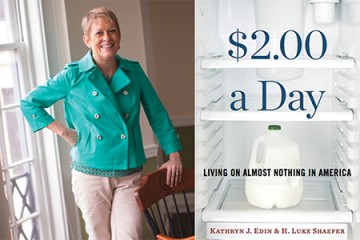With the passage of the Personal Responsibility and Work Opportunity Reconciliation Act of 1996, President Bill Clinton pledged to change welfare as we know it. Twenty years later, Johns Hopkins University sociologist Kathy Edin says maybe that wasn't such a good thing.

Image caption: Kathy Edin
Image credit: Will Kirk / Johns Hopkins University
In a segment that aired Sunday on NPR's "All Things Considered", Edin, an expert on poverty and a Bloomberg Distinguished Professor at JHU, explains how the new form of welfare, Temporary Assistance for Needy Families, or TANF, has failed those who need it most.
"Over time ... TANF became less and less responsive to those times in families' lives when work failed them, and so they began to become more and more likely to be living on virtually nothing," Edin says.
There are 20 million families in the U.S. who live in deep poverty, NPR's Pam Fessler explains in her report, meaning they live on less than $10,000 a year for a family of three. Edin, co-author of $2.00 A Day: Living on Almost Nothing in America, discovered in her research a group of people who are even worse off: there are 1.5 million American families—including 3 million children—who live on less than $2 per person per day.
And yet those who live in extreme poverty might not seek the assistance they are entitled to, Edin says. She tells NPR that in many states, cash benefits are so low that many poor people don't even consider TANF when they're looking for help, opting for food stamps instead.
Also see
"The main reason the welfare rolls have fallen is because people no longer come to welfare stores," Edin says. "They're not even applying."
In a related NPR segment that aired Monday, Edin takes a closer look at the current welfare numbers. Of the 4.1 million people currently on TANF, she says, half live in two states: California and New York.
"In many states across the United States, there is virtually no welfare system at all," Edin says.
Posted in Voices+Opinion, Politics+Society
Tagged sociology, poverty, kathryn edin









